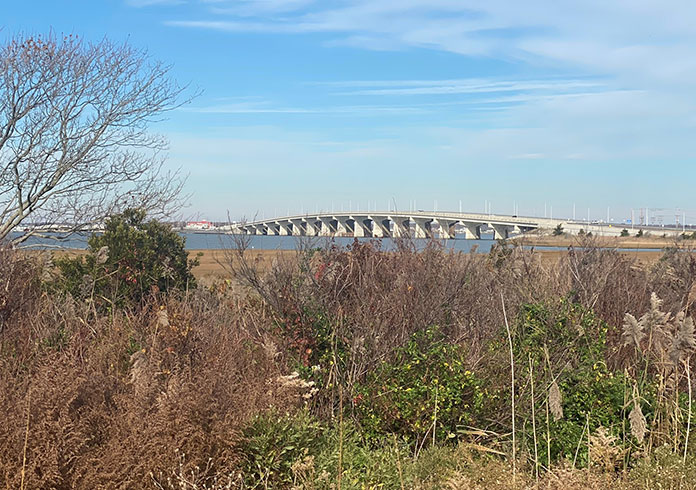
STAFFORD – A senior couple walking along the Cedar Bonnet Island Environmental Trail had a hard time containing their excitement. They had long ago crossed the one-mile trail off their to-do list.
The husband and wife spoke on the condition that their names not be released. Both 75 years old, the grey haired gentleman used a walker to maneuver his way along the path. He and his wife both enjoy birding and came equipped with binoculars.
“We’ve wanted to come back here for a very long time,” said the Beach Haven West resident. “However, there was no way my walker would work on the stone gravel.”
Cedar Bonnet Island is actually part of the Edwin B. Forsythe National Wildlife Refuge and was recently closed for upgrades to the trail’s surface. The new pathway makes it more accessible and complies with requirements mandated by the Americans with Disabilities Act.
Locals and tourists alike may not even know of the trail’s existence. Parking is available a few yards after drivers exit the Causeway Bridge in an easterly direction.
Karen Lazarus of Surf City said it was the first time she visited the trail and will be back to take her canine companion, Ranger. She marveled at the sights and sounds.

“It’s so peaceful back here,” said Lazurus. “It’s all very stunning.”
Birds represent just one of the many inhabits along the trail, many not seen in different local environments. A long-legged white bird stood tall in the water despite November temperatures. It may have been an egret or possibly a heron.
Signs along the trail warn visitors to stay on the covered surface as the area is part of a restoration project. As far back as the 1950s, portions of Cedar Bonnet Island were used as a dredging disposal site. When the US Fish and Wildlife Service (USFWS) acquired the property in the 1990s, it initially prohibited public access.

Ultimately, the USFWS partnered with the New Jersey Department of Transportation and allowed visitors to enjoy the picturesque sights and hear the sounds of wildlife.
“As part of the Refuge’s Comprehensive Conservation Plan, CBI (Cedar Bonnet Island) was identified as a priority for the wildlife habitat restoration and passive recreational use,” said authorities.
Visitors have the opportunity to sit down and take in the sights from two separate pavilions set up along the trail. In addition to wildlife and plants indigenous to wetland habitats, a view of the bridge, LBI, and Atlantic City, are all visible to the bare eye.

While many of the leaves have already fallen from the trees, yellow, daisy-like flowers are still in bloom. The rustle of reeds blowing from soft winds adds to the area’s scenery. For those looking for a quick hike, Cedar Bonnet Island Trail offers some fun exploration.







